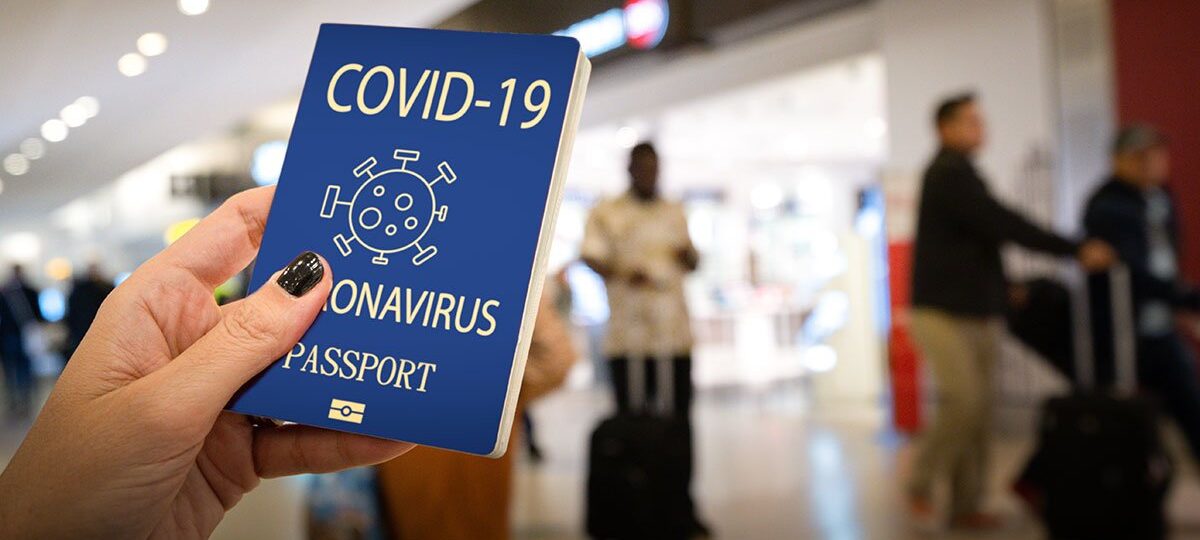The planet is experiencing an unparalleled public health, social and economic emergency as a consequence of the COVID-19 pandemic. Travel and leisure are among the industries most impacted, as aircraft on the field, hotel openings, and travel bans in nearly all countries across the world. In an unforeseen hit to the tourism industry, the COVID-19 pandemic limited foreign visitor arrivals to a fraction of what they were a year earlier in the first quarter of 2020.
What is COVID-19?
One may claim that viruses can not even be categorized as living organisms. Although several hypotheses indicate the root of the COVID-19 virus, the precise start is yet to be verified. The length of survival of the virus on surfaces, such as rubber, metal, or wood, remains to be confirmed.
COVID-19 can live and flourish in living cells, triggering a variety of illnesses in an infected human, including death. The primary mode of propagation of the virus is droplet contamination. When an infected person coughs, and you come in contact with these droplets, touching your lips, nose, and eyes with droplet-contacted palms, you will also be infected.
Upon contact with your eyes, nose, or mouth, the virus continues to migrate to areas in the body where it can live and grow. The lungs, intestines, and spleen are the major attractions where the virus will launch a deadly assault. Coronavirus is much more harmful than the general flu virus. The COVID-19 virus can cause detrimental health problems once it enters a living organism.
The Severity of Damage to the Tourist Industry
Usable evidence points to a double-digit drop of 22 percent in Q1 2020, with arrivals down by 57 percent in March. It translates into a reduction of 67 million overseas visitors and about USD 80 billion in earnings. The forecast for the year has been downgraded many times after the epidemic, considering the high degree of volatility. Present scenarios lead to a reduction of 58% to 78% in foreign tourist arrivals for the year, based on the pace of containment and length of travel restrictions and border closures, but the future remains somewhat unpredictable (scenarios are not expected and should not be viewed as such).
The scenarios represent three potential trends of a monthly shift in arrivals from April to December 2020 assuming that travel restrictions begin to be removed and border controls opened in early July (Scenario 1:-58 percent), early September (Scenario 2:-70 percent), or early December (Scenario 3:-78 percent). These scenarios will place 100 to 120 million direct tourism employment at risk.
The sentiment shared by the UNWTO Panel of Experts points to the beginning of the revival of foreign demand, mainly in 2021. According to panel analysts from all over the world, domestic demand will recover better than foreign demand. Considerable problems exist, beginning with the uncertain length of the disease outbreak and travel bans, in the sense of a global economic crisis. Countries in the world are adopting a broad variety of steps to mitigate the effects of the epidemic of COVID-19 and to promote the recovery of the tourism industry.
Looking Ahead of the Impact of COVID-19 on Global Tourism
The three possibilities proposed for international tourism in 2020 are not predictions and should not be viewed as such.
The three potential trends of monthly transition in arrivals from April to December 2020 assuming that trade sanctions are removed and national borders are opened in early July (Scenario 1), early September (Scenario 2), or early December (Scenario 3). They are focused on the tourism details available for January-March and other details such as the closing of all national boundaries at the end of April, but in a sense of high ambiguity.
The three examples represent three very slow paces of stabilization in which monthly rises in arrivals tend to recede in certain months and there is no major or long-lasting deterioration of the pandemic that impacts travel conditions afterward. Both three scenarios consider reductions in arrivals through December 2020, although to differing degrees.
The simulations are based on a model that takes into account varying trends in recovery in different parts of the world, where Asia and the Pacific are seeing a shift in trend sooner, as the pandemic struck Asia ahead of other areas, and seasonal pattern in Asia is less important than in other areas where the bulk of demand takes place in June-September.
The models do not directly integrate economic influences into the trends of monthly transition, but the economic slowdown arising from the pandemic is projected to have a significant effect on foreign tourism in the near-medium term, impacting customer purchasing tendency.
The data and expectations of these situations will be modified as the condition progresses and more knowledge becomes available.
Conclusion: Travel and recreation are among the sectors most influenced by travel bans. COVID-19 can survive and grow in living cells, causing many impairments in contaminated humans, including death. The lungs, intestines, and spleen are the key attractions where the virus can initiate a deadly assault. Usable data points to a double-digit fall of 22 percent in Q1 2020, with arrivals down by 57 percent in March. This translates into a drop of 67 million foreign tourists and around USD 80 billion in earnings.
The sentiment expressed by the UNWTO Panel of Experts points to the beginning of the revival of international demand, particularly in 2021. Home production would rebound faster than international demand. Countries are taking a full range of measures to minimize the impact of the COVID-19 outbreak. The economic downturn resulting from the pandemic is expected to have a major effect on global tourism in the near-medium term, disrupting tourism habits.
More articles
Minimum Impact Tourism for Preservation of Nature and Country
The Tourism Industry and the Best Methods to Protect the Environment

